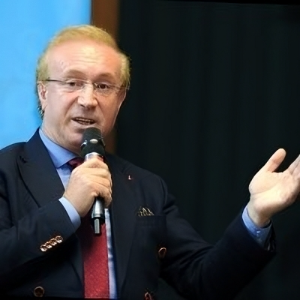Title : Integration of Parabolic Trough Collectors (PTC) in Solid Oxide Electrolysis Cells (SOEC) for green hydrogen production
Abstract:
The global shift towards sustainable energy sources to combat climate change highlights the significance of green hydrogen as a versatile and renewable energy carrier. Solid oxide electrolysis (SOE) emerges as a promising technology for green hydrogen production, offering high efficiency and the ability to use various feedstocks. Unlike traditional methods, SOE directly converts water into hydrogen and oxygen without emitting greenhouse gases. However, challenges such as high energy consumption and dependence on electricity require innovative solutions. Leveraging renewable energy sources like solar power can enhance the sustainability and economic viability of SOE-based green hydrogen production. Parabolic Trough Collectors (PTCs) are an excellent choice for integration with Solid Oxide Electrolysis Cells (SOECs) due to their proven ability to efficiently harness and concentrate solar energy into high-temperature heat. This high thermal efficiency makes PTCs well-suited to meet the elevated temperature requirements of SOECs, significantly reducing the reliance on electrical energy. Additionally, PTC technology is scalable, reliable, and has a well-established track record in industrial applications, ensuring feasibility for both small- and large-scale deployments. The ability to integrate thermal storage with PTCs further enhances their appeal by enabling continuous operation during periods of low solar irradiance or nighttime, which is critical for maintaining system efficiency and reliability. This combination of efficiency, scalability, and adaptability makes PTCs an ideal solution for sustainable and cost-effective green hydrogen production. In this paper, we explore the integration of high-temperature solar thermal systems with SOE as a means to address the energy-intensive nature of the process. We examine the principles and advantages of both SOE and high-temperature solar thermal technologies, discuss the challenges associated with their integration, and propose strategies for optimizing system performance. Through techno-economic analysis and performance modelling, we aim to demonstrate the feasibility and potential benefits of coupling solar thermal energy with SOE for green hydrogen production. By doing so, we contribute to the advancement of sustainable energy technologies and accelerate the transition towards a low-carbon hydrogen economy. The following illustration delineates the integration of the PTC (Parabolic Trough Collector) system within the overarching framework, focusing solely on the principal components. Heat harnessed from the solar collectors is directed into the system through a tailored heat exchange mechanism positioned at the cathode, thereby augmenting the overall electrical system efficiency.
This illustration provides a conceptual overview of how the integrated system would function under real operating conditions, showcasing the interaction between the PTC and SOEC components. For a clearer understanding of the energy flow and balance within the system, the accompanying Sankey diagram offers an overall depiction of the thermal and electrical contributions and their distribution throughout the process This Figure serves as a large-scale extrapolation based on data obtained from the researched article provided by Fraunhofer IKTS, augmented by our own calculations derived from the state-of-the-art analysis. The presentation will focus on the integration framework where PTC systems are coupled with SOECs through tailored heat exchangers. This innovative setup channels solar-derived thermal energy directly into the electrolysis process, significantly reducing electricity consumption. For example, a system utilizing 170 PTCs with a reflector diameter of 1.8 m can fully meet the thermal demand during the summer months, leading to the definition of a collector field size with a nominal capacity of 850 kWth and a peak capacity of 1.1 MWt and supported by a 180 m³ thermal storage unit to ensure continuous operation at night. This integration enables an annual solar thermal coverage of 67%, marking a significant improvement in system sustainability. We also explored an alternative approach focusing on supplying demand solely during sunlight hours, with conventional methods utilized during low or no Direct Normal Irradiance (DNI) periods or at night. This strategy involves 80 PTC 1800 collectors with a nominal capacity of 400 kW and a peak capacity of 510 kW, generating 875 MWh of clean thermal energy, capable of covering 86% of the demand during sunlight hours only, and achieving an overall demand coverage of approximately 33%. This option includes a small buffer storage of up to 15 m³. In addition to outlining the technical aspects, the presentation will provide a comprehensive techno-economic analysis to illustrate the integration's efficiency gains and environmental benefits. By leveraging solar energy and optimizing heat recovery within the SOEC system, this approach minimizes operational costs and carbon emissions. The findings underline the transformative potential of integrating PTCs with SOECs, offering a scalable and commercially viable pathway for large-scale green hydrogen production. This presentation will not only showcase the cutting-edge advancements in renewable hydrogen technologies but also position this integration strategy as a pivotal step in achieving a carbon-neutral energy future. It is designed to engage and inspire stakeholders by demonstrating the technical feasibility, economic advantages, and environmental impact of this innovative approach, making a compelling case for its adoption in the global transition towards clean and renewable energy sources.



